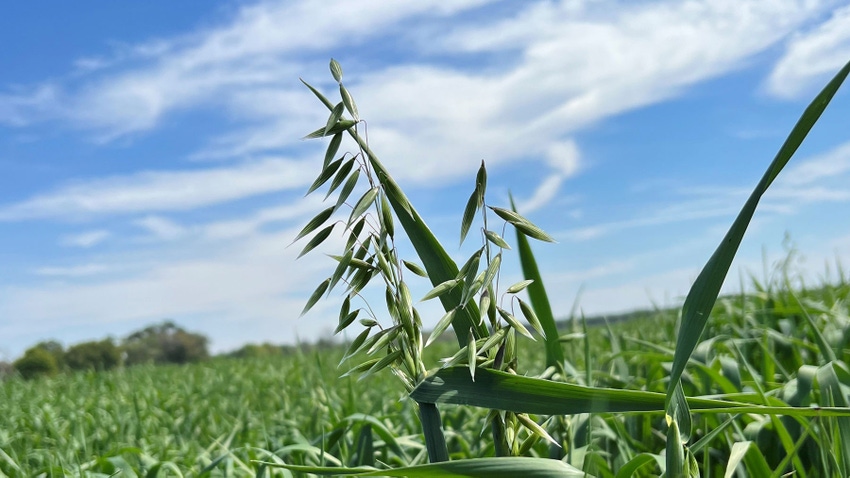March 24, 2023

By Rome Ethredge
I want to provide a snapshot of what we are seeing now in the Southeast in oats being grown for grain and seed.
Plant growth is good, really bounced back from the freeze and prolonged cold that happened just before Christmas. We had freeze injury that killed leaves and we lost some plants as well. Most plant loss was on younger plants.
Recommended planting time for Deep South oats for grain is around the first frost date. You don’t want to plant early as we can get freeze damage on too early emerging heads. Folks that split the sidedressing got especially good tillering. Now we have jointing and some flag leaves, or final leaf before heading, are out, with a few heads showing.
Weed control is finished at this point with wild radish being a real pain. Oats are more sensitive to many herbicides than other winter grains so we often must use lower rates and we need to be careful to spray when weeds are young and small.
Insects now in the oat field are aphids and lady beetles predominantly. Aphids are bad and do direct feeding damage and transmit Barley Yellow Dwarf disease. We need to control them if numbers warrant it. Lady beetles are eating as many aphids as they can.
We need to be on the lookout for disease. Rust gets on oat leaves and is often bad enough for treatment. In the past, we’ve had some varietal resistance but rust is shifty and we lose the resistance. I’m seeing rust now in oats, it’s best to time fungicides when the flag leaves are out to protect them.
We usually get our best small grain yields during dry, sunny spring, and irrigation is often not needed for oats until grain fill time.
It’s a pleasure watching the oats grow. Jesus remarked about the miracle of grain growth, “Night and day, whether he sleeps or gets up, the seed sprouts and grows, though he does not know how. All by itself the soil produces grain—first the stalk, then the head, then the full kernel in the head.” Mark 4:27-28
Ethredge owns Seminole Crop Consulting in Donalsonville, Ga.
You May Also Like




